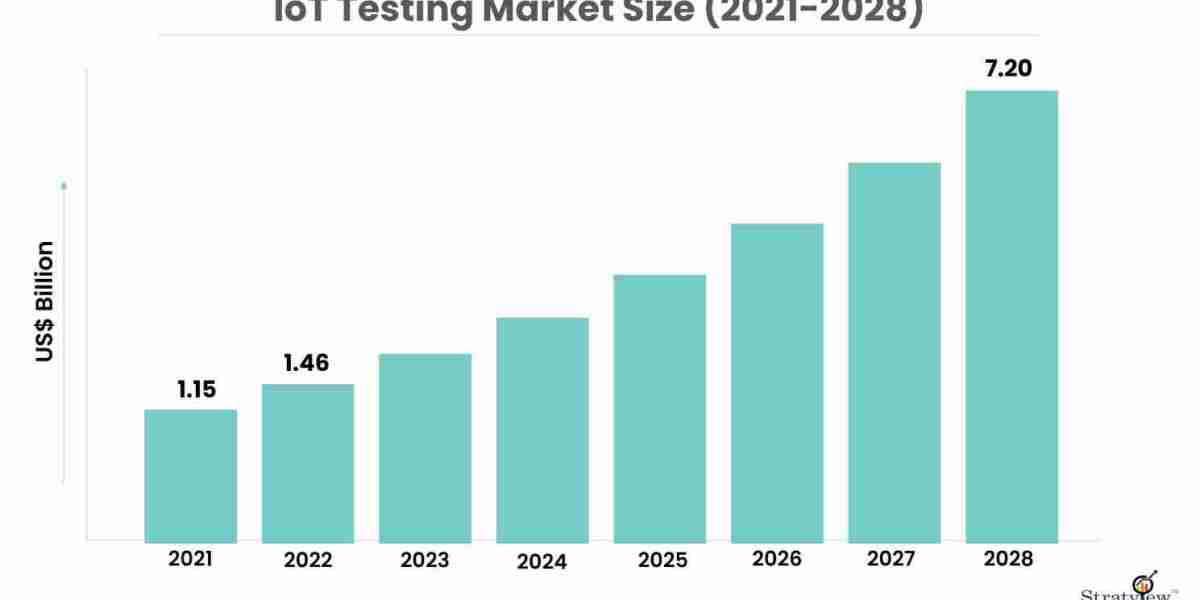In today's interconnected world, the Internet of Things (IoT) has revolutionized the way we interact with technology. From smart homes and wearable devices to industrial automation and healthcare systems, IoT technology has become an integral part of our daily lives. However, ensuring the quality and reliability of IoT devices and applications poses unique challenges. This is where IoT testing plays a crucial role in improving quality assurance and enhancing the customer experience. The global IoT testing market is expected to grow from USD 1.15 billion in 2021 to USD 7.20 billion by 2028 at a CAGR of 30.4% during the forecast period.
Quality Assurance (QA) is a vital component of any product development lifecycle. In the context of IoT, QA involves a comprehensive evaluation of the hardware, firmware, software, communication protocols, and user interfaces of IoT devices and systems. IoT testing helps identify and address potential issues and vulnerabilities, ensuring that the product meets the required quality standards.
One of the key impacts of IoT testing on quality assurance is the early detection of defects. IoT systems often involve a complex network of interconnected devices, sensors, and communication protocols. By conducting rigorous testing throughout the development process, organizations can identify and rectify defects at an early stage, minimizing the risk of costly rework or product recalls. Early defect detection leads to improved product quality, enhanced reliability, and reduced time-to-market.
Moreover, IoT testing also helps validate the performance and functionality of IoT devices and applications. It ensures that the devices function as intended, communicate seamlessly with each other, and provide accurate and reliable data. By testing different usage scenarios, IoT testers can simulate real-world conditions and validate the performance and responsiveness of the system. This allows organizations to deliver products that meet or exceed customer expectations, resulting in a positive customer experience.
Security is another critical aspect of IoT testing that significantly impacts both quality assurance and customer experience. IoT devices collect and transmit sensitive data, making them potential targets for cyberattacks. IoT testing helps identify security vulnerabilities and weaknesses in the system, ensuring that appropriate security measures are implemented. By addressing security concerns, IoT testing helps protect customer data, preserve privacy, and build trust with end-users.
The customer experience is greatly influenced by the reliability and usability of IoT devices and applications. IoT testing helps ensure that the devices work seamlessly, providing a smooth and intuitive user experience. By testing user interfaces, functionality, and usability, organizations can identify and rectify issues such as slow response times, inconsistent data accuracy, and poor user interactions. A positive customer experience leads to increased user adoption, customer satisfaction, and brand loyalty.
IoT testing also has a significant impact on the overall system performance. By conducting performance testing, organizations can assess the scalability and reliability of IoT systems. Performance testing identifies bottlenecks, stress tests the system under different loads, and measures response times. This helps optimize the system's performance, ensure smooth operation, and prevent performance degradation in real-world usage scenarios.
Furthermore, IoT testing plays a crucial role in ensuring interoperability between devices and systems. With a wide range of IoT devices from different manufacturers and utilizing various communication protocols, interoperability becomes a challenge. IoT testing helps identify compatibility issues, protocol conflicts, and interoperability gaps, enabling organizations to address these issues and ensure seamless communication and integration of IoT devices.
In conclusion, IoT testing has a profound impact on quality assurance and customer experience in the IoT ecosystem. By detecting defects early, validating performance, addressing security concerns, optimizing system performance, and ensuring interoperability, IoT testing enhances product quality, customer satisfaction, and brand reputation. As IoT technology continues to evolve, organizations must prioritize comprehensive IoT testing to deliver reliable, secure, and user-friendly IoT solutions.









